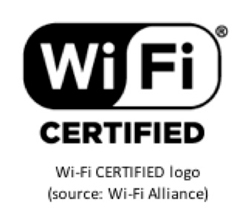|
 The past two Standards columns provided an extensive update on the latest standardization development of Wi-Fi in IEEE 802.11, which is a working group operating under the IEEE LAN/MAN Standards Committee (LMSC). This month, I would like to share an update on Wi-Fi Alliance®, a global, non-profit industry association of approximately 700 leading companies from dozens of countries devoted to seamless interoperability. The past two Standards columns provided an extensive update on the latest standardization development of Wi-Fi in IEEE 802.11, which is a working group operating under the IEEE LAN/MAN Standards Committee (LMSC). This month, I would like to share an update on Wi-Fi Alliance®, a global, non-profit industry association of approximately 700 leading companies from dozens of countries devoted to seamless interoperability.
I believe many of you may be familiar with IEEE 802.11, which is a standards development organization (SDO) that is responsible for writing standards focusing on Wireless Local Area Network. Wi-Fi Alliance, on the other hand, is an international trade association (ITA) whose primary responsibility is to develop technical specifications and test plans for interoperability certification. In this context, certification means that a product has been tested
extensively in various configurations with a diverse sampling of
previously Wi-Fi CERTIFIED devices, to validate interoperability with
other equipment operating in the same frequency band. This Wi-Fi CERTIFIED logo is one of the most recognizable brands in the world, which gives confidence to consumers that the Wi-Fi products they are using meet industry standards (e.g., those developed by IEEE 802.11 working group) for seamless interoperability and security. With technology development, market building, and regulatory programs, Wi-Fi Alliance has enabled widespread adoption of Wi-Fi worldwide, certifying thousands of Wi-Fi products each year.
The certification programs run by Wi-Fi Alliance cover the following six categories: connectivity, security, access, applications and services, optimization, and RF coexistence. In the next Standards Column of the VT Magazine (December 2016), four popular and recently-launched programs among these six categories will be highlighted. |